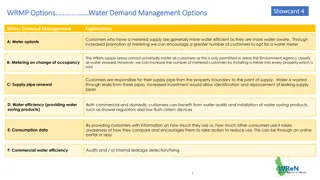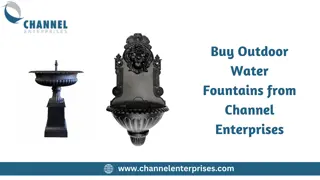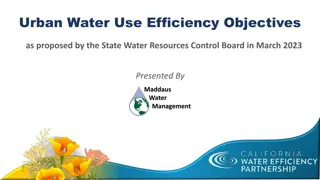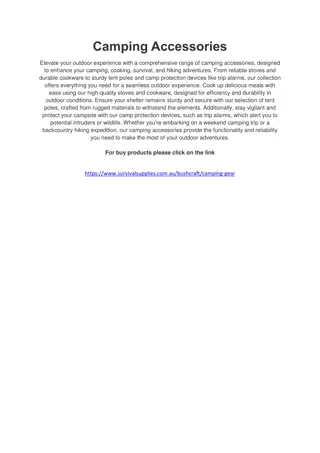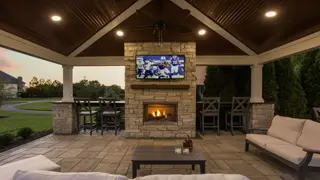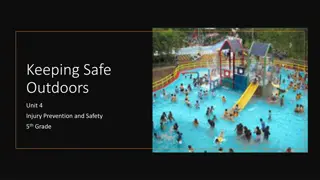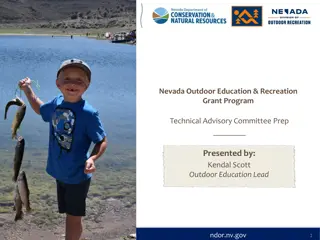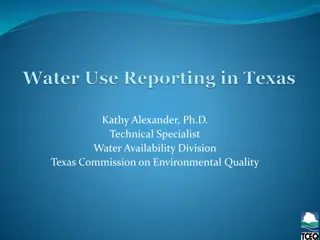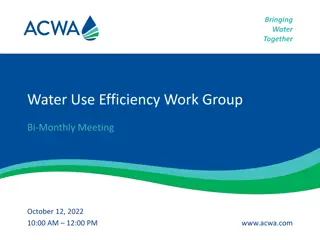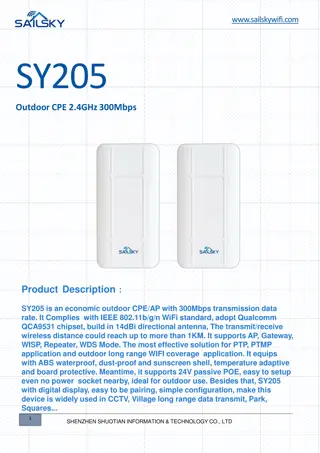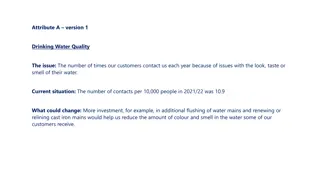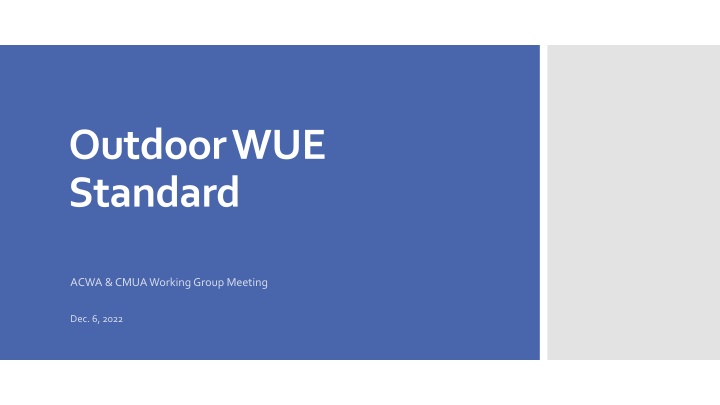
Water Supply and Conservation Strategies in Response to Ongoing Drought Pressures
Explore key strategies and recommendations aimed at reducing water demand, promoting conservation, and addressing ongoing drought challenges in the state. Topics include regulations, irrigation standards, water sources, and more.
Download Presentation

Please find below an Image/Link to download the presentation.
The content on the website is provided AS IS for your information and personal use only. It may not be sold, licensed, or shared on other websites without obtaining consent from the author. If you encounter any issues during the download, it is possible that the publisher has removed the file from their server.
You are allowed to download the files provided on this website for personal or commercial use, subject to the condition that they are used lawfully. All files are the property of their respective owners.
The content on the website is provided AS IS for your information and personal use only. It may not be sold, licensed, or shared on other websites without obtaining consent from the author.
E N D
Presentation Transcript
Outdoor WUE Standard ACWA & CMUA Working Group Meeting Dec. 6, 2022
Irrigated Area and Water Source Residential Dedication Irrigation Meter (DIM) Irrigated (II) Potable 2023 2030: 0.8 2030 +: 0.63 2023 2030: 0.8 2030 +: 0.63 Irrigable, Not Currently Irrigated (INI) 20% of INI 2023 2030: 0.8 2030 +: 0.63 No INI component DWR Final Recommendations May be adjusted based on future studies Special Landscape Areas 2023 2030: 0.8 2030 +: 0.63 1.0 Sept. 2022 Sports field, functional turf Irrigated with recycled water New Construction & Rehabilitated Landscapes (post Jan. 1, 2020) 0.55 0.45
Irrigated Area and Water Source Residential Dedication Irrigation Meter (DIM) New Construction & Rehabilitated Landscapes (post Jan. 1, 2020) Provided by DWR May be adjusted w/ supplier data Suppliers to identify and complete measurements w/in 5 yrsafter adoption DWR Final Recommendations Other Considerations: Effective Precipitation Would reduce outdoor budget by up to 25% Not addressed in recommendations to SWRCB, but previously incorporated into proposed calculation formula Sept. 2022 Exempt Landscapes (Gov. Code 65598 and 2015 MWELO) Cemeteries Registered historical sites Ecological restoration projects that no not require permanent irrigation Botanical gardens & arboretums open to the public
Water Supply Strategy Aug 2022 3.1 Build upon the conservation achievements of the last two decades to reduce annual water demand in towns and cities by at least half a million acre-feet by 2030. The recommended standards for indoor and outdoor water use for residential, commercial, industrial, and institutional water use could save 450,000 acre-feet per year starting in 2030. T Additional Considerations The State Water Board will begin the process for enacting the regulation to ensure the rule will be in effect by January 1, 2024. DWR s Recommended Savings The recommended standards for indoor and outdoor water use for residential, commercial, industrial, and institutional water use could save 450,000 acre-feet per year starting in 2030. ~ 80 suppliers would have to reduce water use to meet the standard.
Ongoing Drought Pressures The State is experiencing more frequent and severe drought conditions and reduced runoff than ever before due to climate change, hence the need for more stringent long-term ORWUS. Climate Change Additional Considerations Taking into consideration DWR s legislative mandate and the imperative to achieve reasonably greater long-term water use efficiency for climate resilience, DWR recommends an ORWUS of 0.8 for 2023, and 0.63 for 2030 and beyond.
Technical Considerations Trimming data above 1.0 Applying theoretical average of housing stock according to MWELO principles 0.8 IE with horticultural science Correct Existing ORWU Policy Considerations Timeline ACWA comment letter asked for 5 additional years Infeasible standards caps/ alternative compliance Unintended consequences shade trees, DACs Suppliers limited authority Customer behavior dependent Process to submit improved LA Data Variances e.g. wildfire Opportunities for Input
Total Savings 450,000 AF Savings - did DWR get this right? Need Agency Specific Examples Data cost/ benefit LA data challenges MWELO applicability Impacted agencies with significant challenges Unintended impacts Opportunities for Input IRWD Tool Landscape conversion
State Water BoardRulemaking SRIA Standardized Regulatory Impact Assessment Workshop Initiate Formal Rulemaking Feb/ March 45-day comment period End of year adoption? ACWA Next Steps Provide proactive recommendations/ solutions to SWRCB staff Ongoing ORWUS working group meetings Bi-monthly WUE meetings through 2023: Jan. 11, March 8, May 10, July 12, Sep. 13, Nov. 8 CII Working Group Dec. 8 from 3 4 Next Steps Contact Sarah Brennan, ACWA Regulatory Assistant Sarahb@acwa.com



